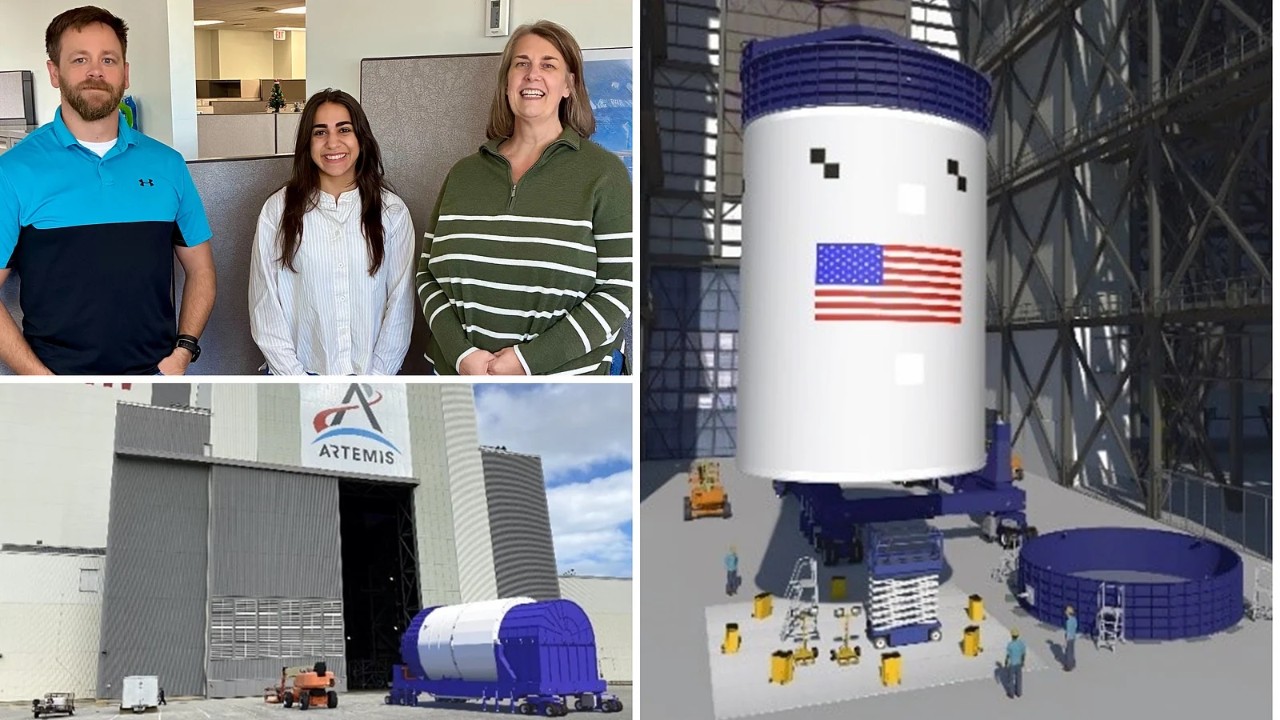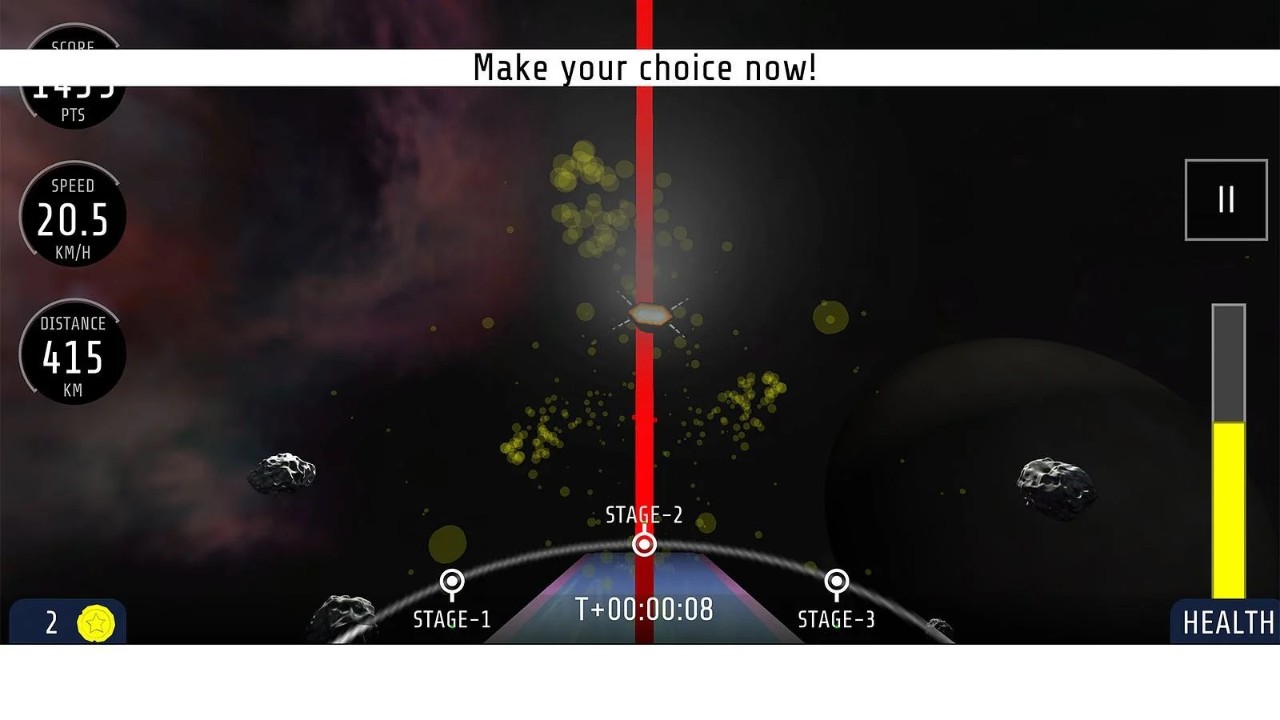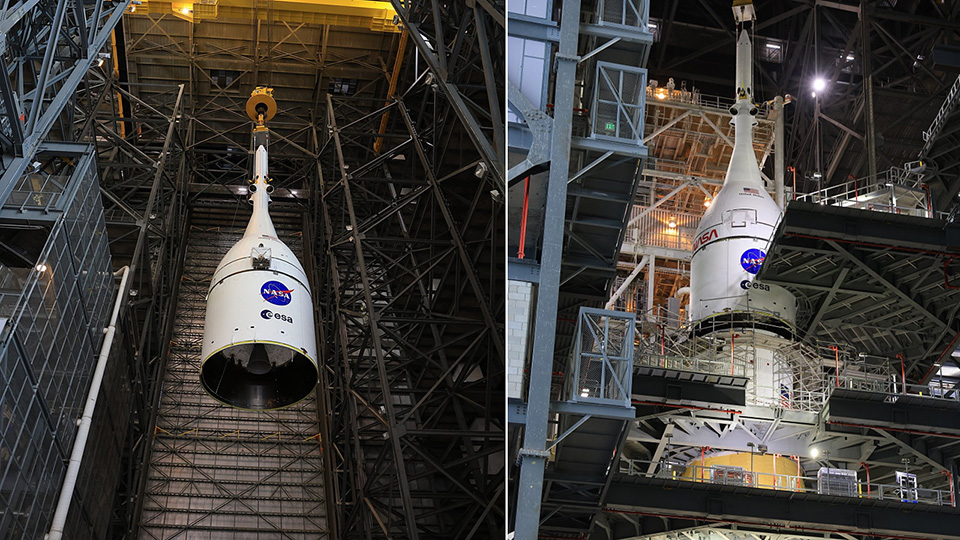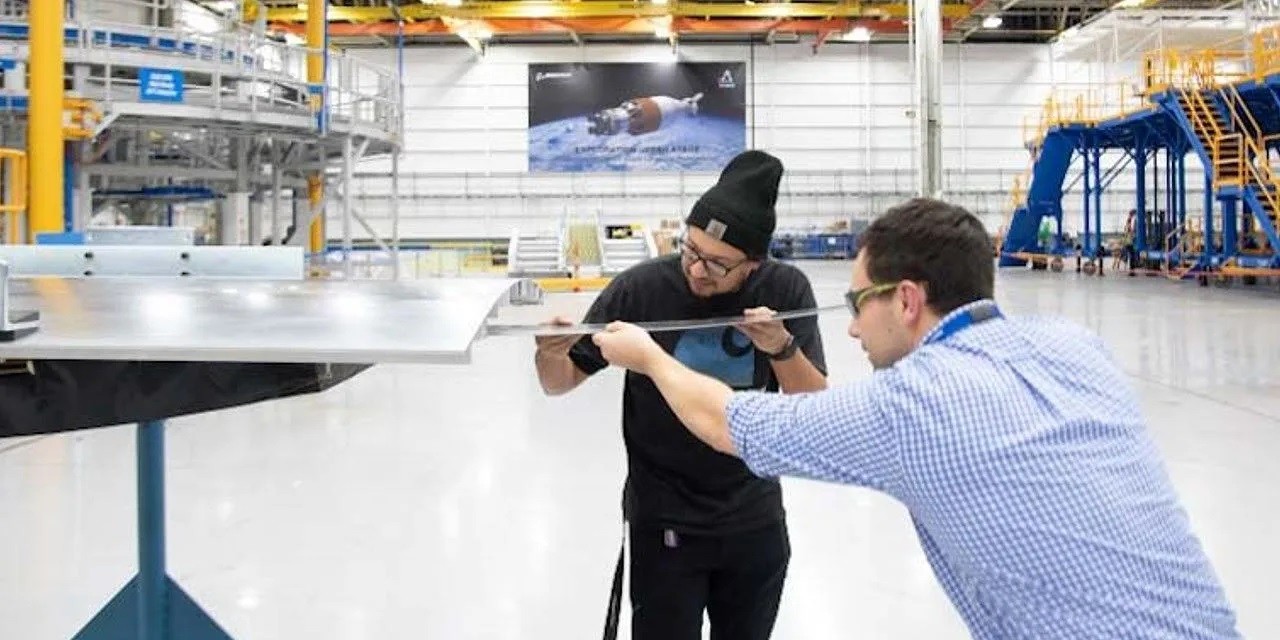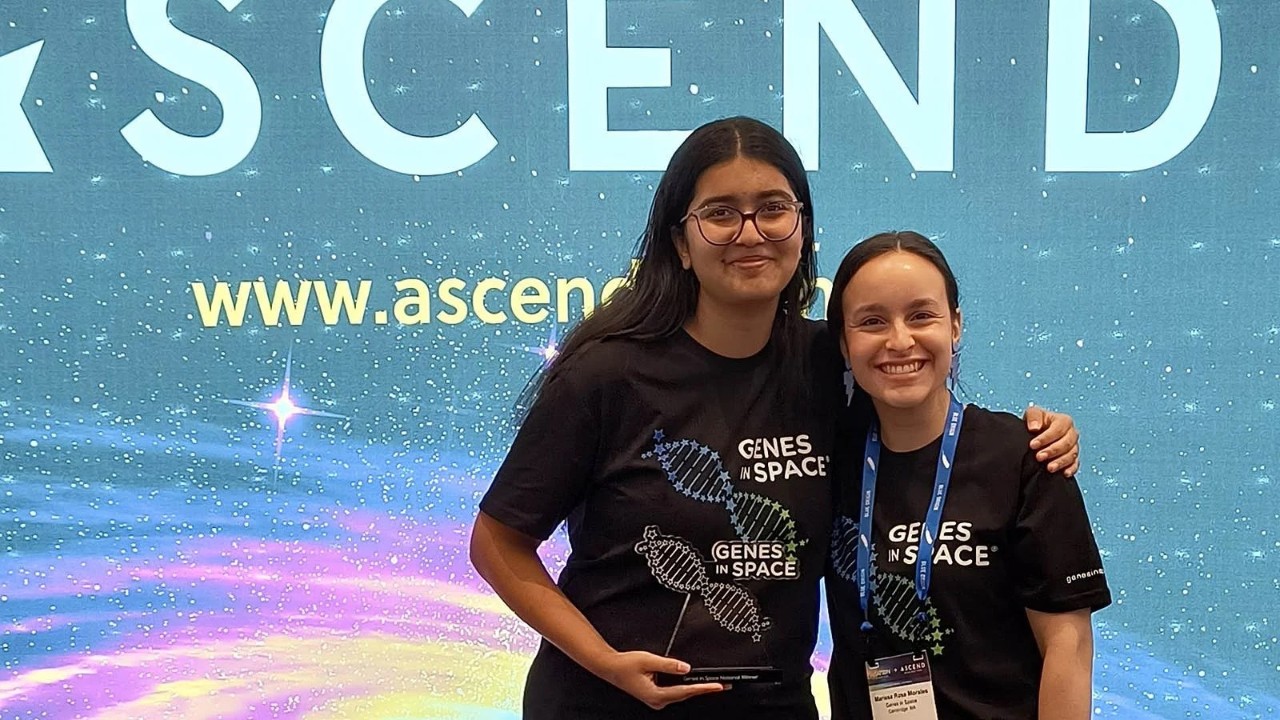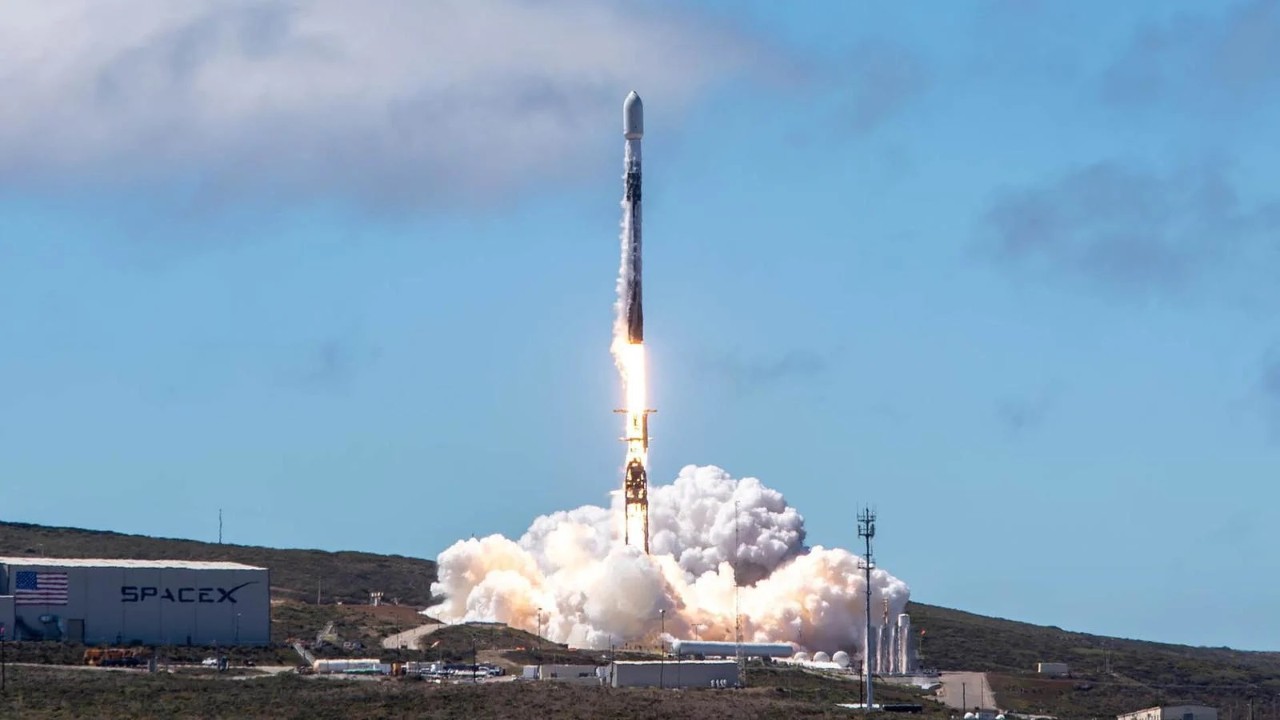Astronaut homecoming: Colorful as art, precise as science
8 things to look for when the Starliner crew and space capsule returns to Earth.
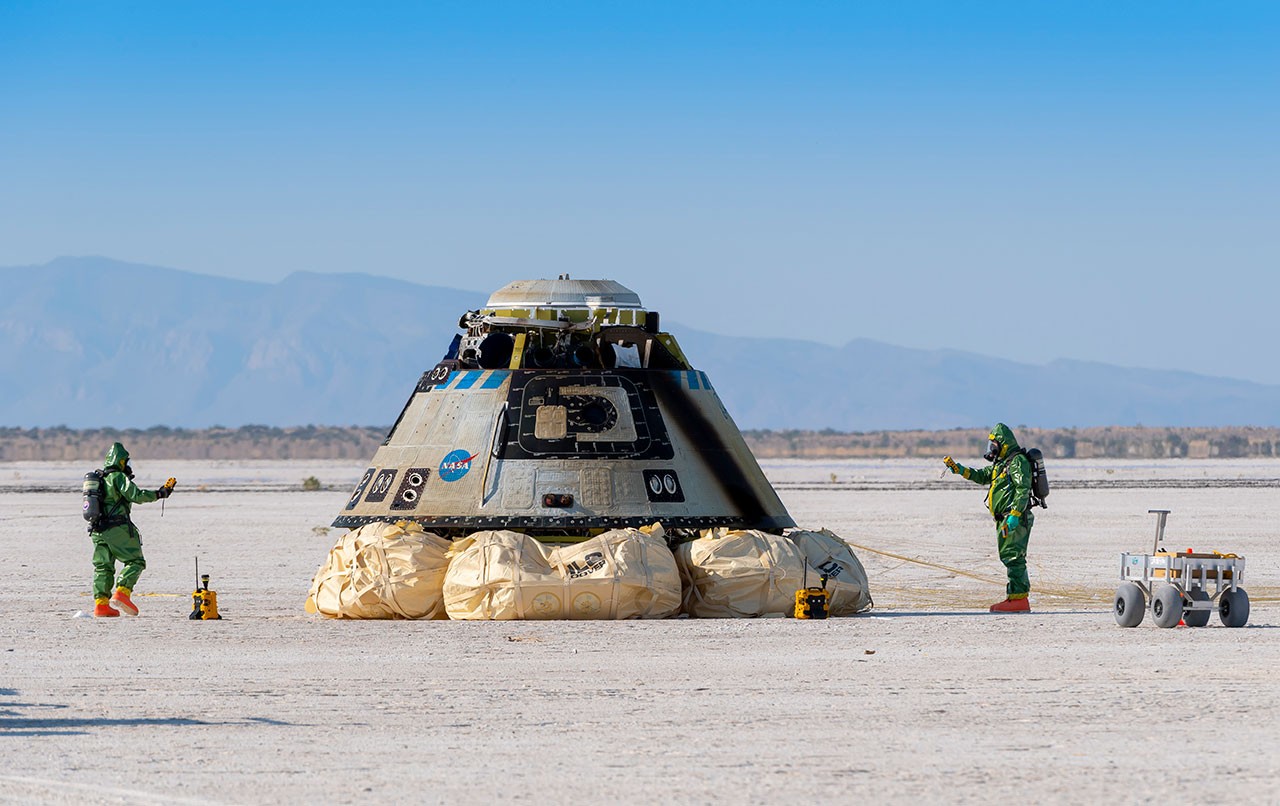 Starliner following the Orbital Flight Test-2 at White Sands Missile Range’s Space Harbor in New Mexico on May 25, 2022. (Boeing/Eric Shindelbower photo)
Starliner following the Orbital Flight Test-2 at White Sands Missile Range’s Space Harbor in New Mexico on May 25, 2022. (Boeing/Eric Shindelbower photo)
Even after the CST-100 Starliner spacecraft lands in the western United States in the coming days, the first flight with astronauts aboard won’t be complete.
About 70 people, stationed in vehicles on the desert sand, will move in to secure the spacecraft and extract the crew and a small amount of cargo as quickly as possible.
That may seem straightforward. But retrieving and caring for the astronauts, while protecting the landing and recovery zone from potential hazards, is a diligently rehearsed, precisely executed finale led by Boeing experts from across the United States.
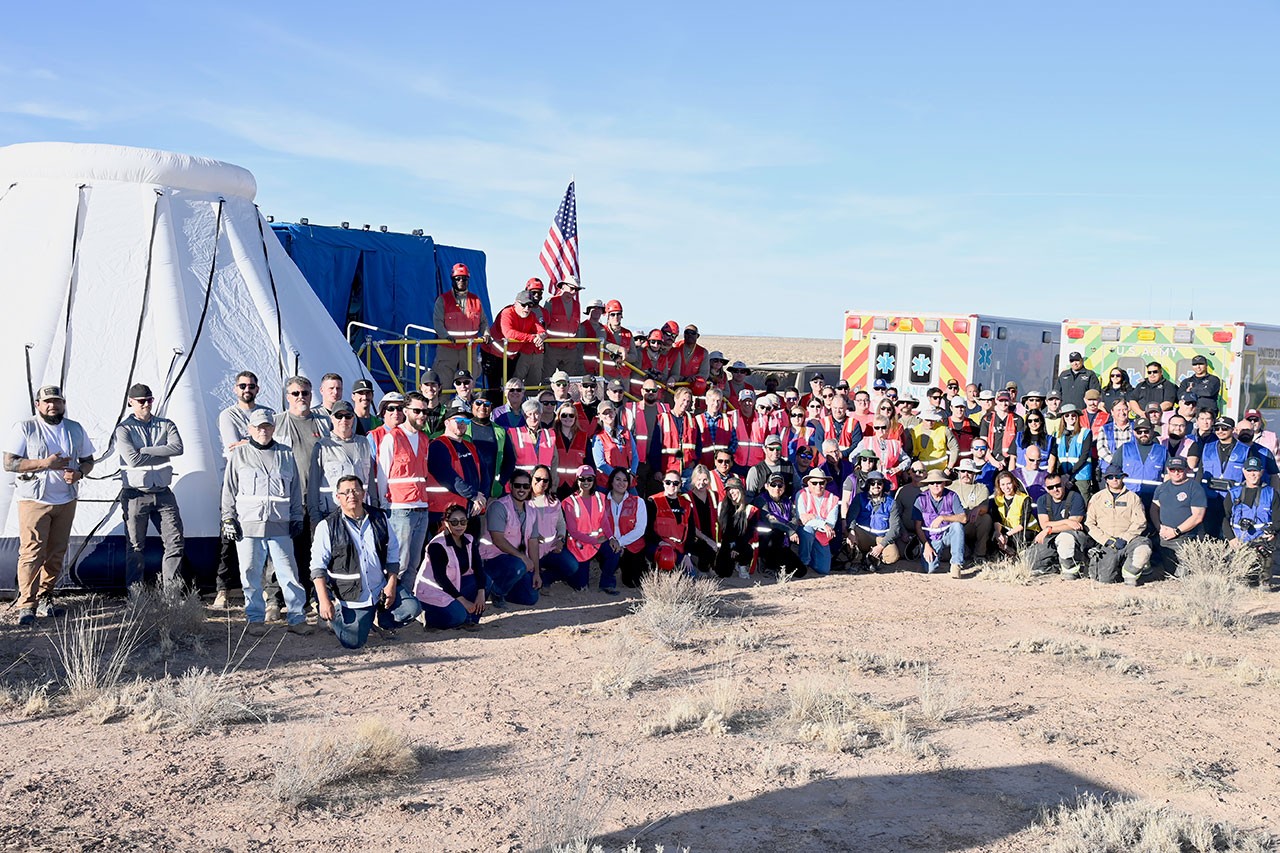 The Landing and Recovery Team at a Mission Dress Rehearsal in January at White Sands Missile Range in New Mexico. (White Sands Missile Range photo)
The Landing and Recovery Team at a Mission Dress Rehearsal in January at White Sands Missile Range in New Mexico. (White Sands Missile Range photo)
The firefighters, medical staff, engineers and other professionals who comprise the Landing and Recovery Team know the risks presented by the harsh desert environment and even the space capsule itself. They also know how to manage risks, working through steps that, to outsiders, might appear anything but methodical.
“The activity at the landing site may look chaotic, but it’s actually very logical and purposeful,” said Boeing’s Bryan Gartner, recovery director for the Crew Flight Test. “The recovery is only 10% of the job. The other 90% is planning.”
Gartner and his team have been preparing for the Crew Flight Test for years. They continue to practice even in the final hours leading up to the Starliner’s landing.
To understand what role each Landing and Recovery subgroup plays in safely bringing the Starliner astronauts and capsule home, look for the colors of the teams’ vests.
Bookmark this page, and use the list as a guide while watching the live landing broadcast.
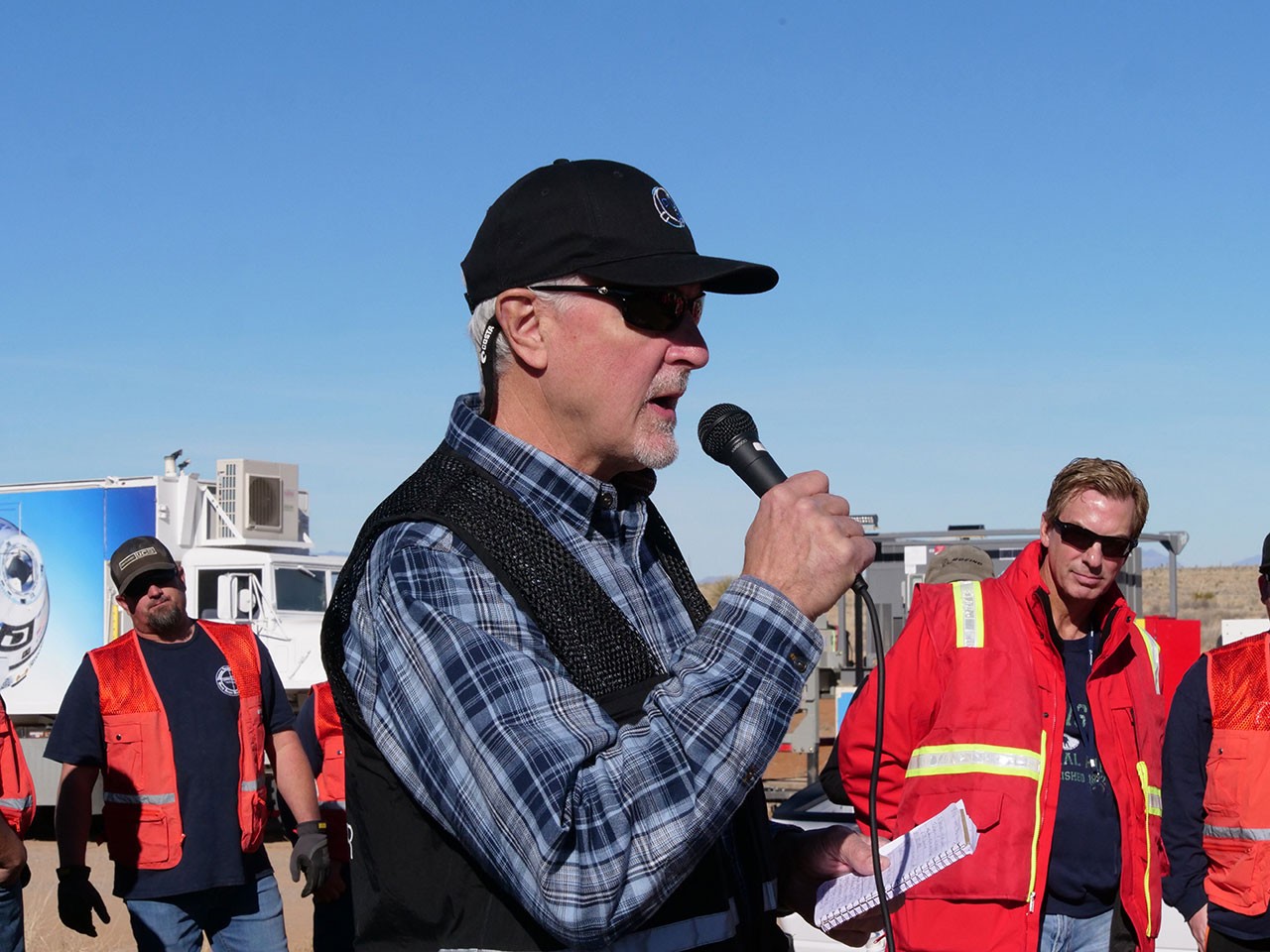 Jeff Davis speaks to teams during a Mission Dress Rehearsal. (Boeing/Tom Rule photo)
Jeff Davis speaks to teams during a Mission Dress Rehearsal. (Boeing/Tom Rule photo)
1) Black Command Team — oversees the recovery
This team oversees all landing and recovery operations, coordinating with each of the other seven subgroups.
After the Starliner touches down, the Black Command Team leads all teams from their holding area 2.5 miles (4 kilometers) outside of the landing target.
The Landing and Recovery Team’s vehicles likely won’t move in a straight line, as they navigate around obstacles in the desert terrain and approach the spacecraft from upwind. Doing so protects the team from potentially hazardous gas emitted by the crew module.
The command team also writes procedures and training materials, develops and purchases recovery hardware, and leads rehearsals.
“Even though team members come from many different states, we are one team with one mission,” said Jeff Davis, who supported space shuttle recovery efforts for more than 20 years and now, as a member of the command team, serves as recovery operations lead.
“We have trained for every scenario and practiced so much that by the time we are in the field, we operate from muscle memory,” Davis said.
2) Purple Team — communicates with mission staff, tracks the spacecraft
Viewers are not likely to glimpse much of this team during the start of landing and recovery efforts.
Operating from the Mobile Data Tracking Vehicle and Mobile Landing Control Center, the Purple Team tracks the spacecraft as it travels toward Earth, capturing imagery and communicating with mission control teams in Houston and at the Kennedy Space Center in Florida, as well as teammates with them at the landing site.
3) Gold Team — checks for hazards
Don’t be fooled by the green hazmat gear. The first people to approach the spacecraft are actually members of the Gold Team. Their gold vests won’t be visible while they are suited up checking the crew module to make sure the area is free of toxic vapors.
This team consists mostly of Boeing firefighters, selected from eight stations across the country, as well as an Environment, Health & Safety professionals. Members of the Landing and Recovery team say the Gold Team’s expertise and preparedness calms everyone else.
“Landing day feels a bit like a big sports game,” said Abby Gaston, a member of the Gold Team and an EHS manager.
“You’ve practiced and practiced, yet there’s still the adrenaline," Gaston continued. "The way you combat that, and ensure everyone stays safe from beginning to end, is by moving one step at a time. You don’t think about the final score when you’re only in the first half.”
Todd Bark, Boeing firefighter and Gold Team lead, added: “When you stay level, you don’t make mistakes, and you move more quickly than if you get excited. We like to say that smooth is fast.”
4) Silver Team — stabilizes and safes the spacecraft
After the Gold Team declares the air safe, the Silver Team moves in to address other hazards. Wearing hazmat suits, team members discharge static electricity from the spacecraft, remove parachutes and stabilize the vehicle on the sand.
The team has extensive parachute design, fabrication, testing and recovery experience on Boeing and NASA programs.
Ty Bowen, parachute systems engineer, who is the Silver Team lead, came to Boeing in January 2022 but has a 32-year career centered around designing, building, repairing, packing and maintaining parachute equipment.
He said the team has completed many recovery training rehearsals, been focused on improving and preparing the landing system hardware, and is looking forward to welcoming the crew back after a safe and successful flight.
Preston Ferguson, also on the Silver Team, has spent more than 11 years working on the Starliner’s parachutes and air bags — key components that allow it to arrive on land. “We’ve trained hard and are proud to help the astronauts return safely,” he said.
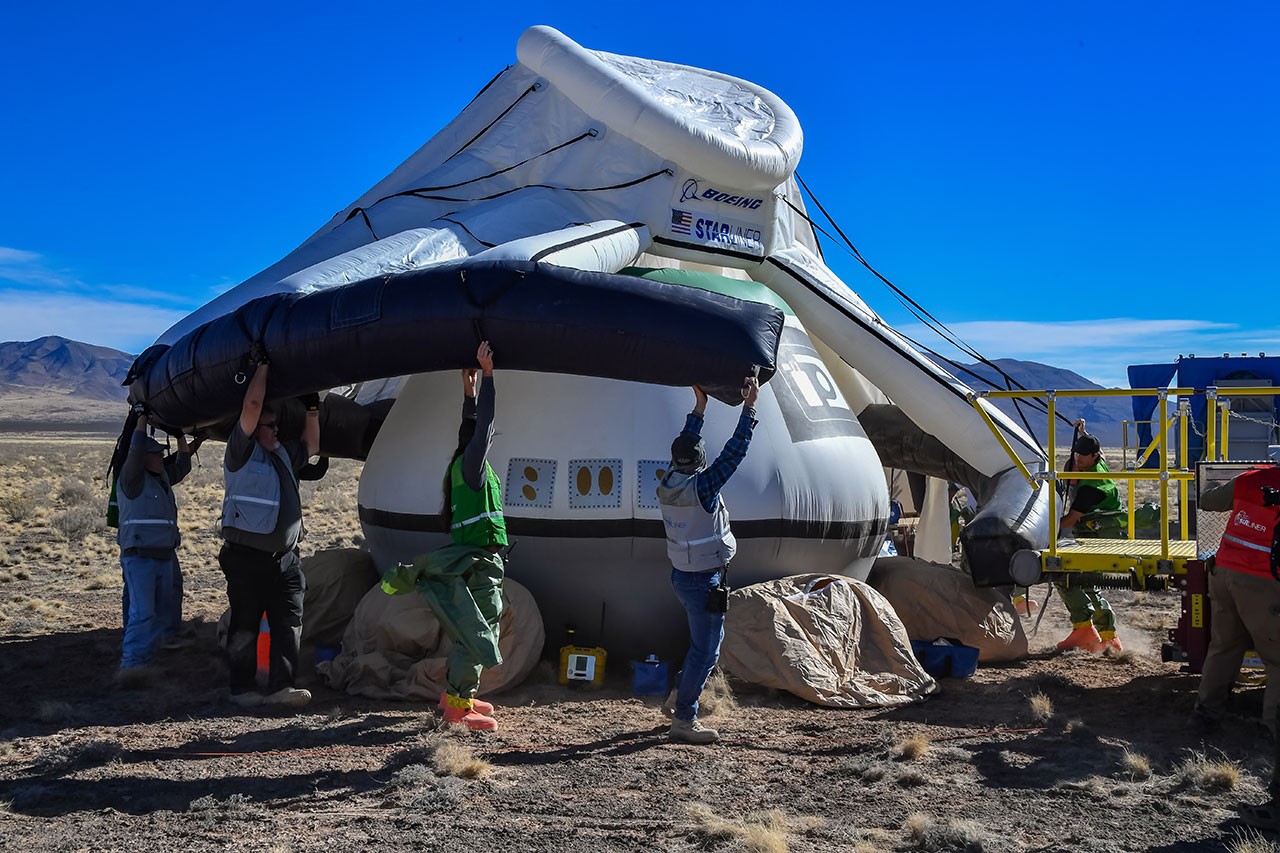 Green and Silver team members during a recent Mission Dress Rehearsal (White Sands Missile Range photo)
Green and Silver team members during a recent Mission Dress Rehearsal (White Sands Missile Range photo)
5) Green Team — moderates temperatures, covers the vehicle.
As the Gold and Silver teams do their work, the Green Team prepares at a safe distance and watches the clock.
This team has just 30 minutes, from the time the spacecraft lands, to connect a refrigerant-circulating ground cooling unit to the vessel. This helps protect vehicle avionics and hardware, while ensuring the air delivered to the crew’s suits is comfortable.
The Green Team also moves an environmental enclosure — affectionately referred to as a children’s “bounce house” — over the crew module to help protect it from the desert’s extreme temperatures, dust and debris.
Once the hatch is opened, the team establishes a humidity-controlled purge that cleans the cabin air.
“It’s a well-choreographed ensemble,” said Matthew Adams, Green Team lead. “We feel really comfortable in what we’re doing and fortunate to help bring Starliner’s capabilities to our country.”
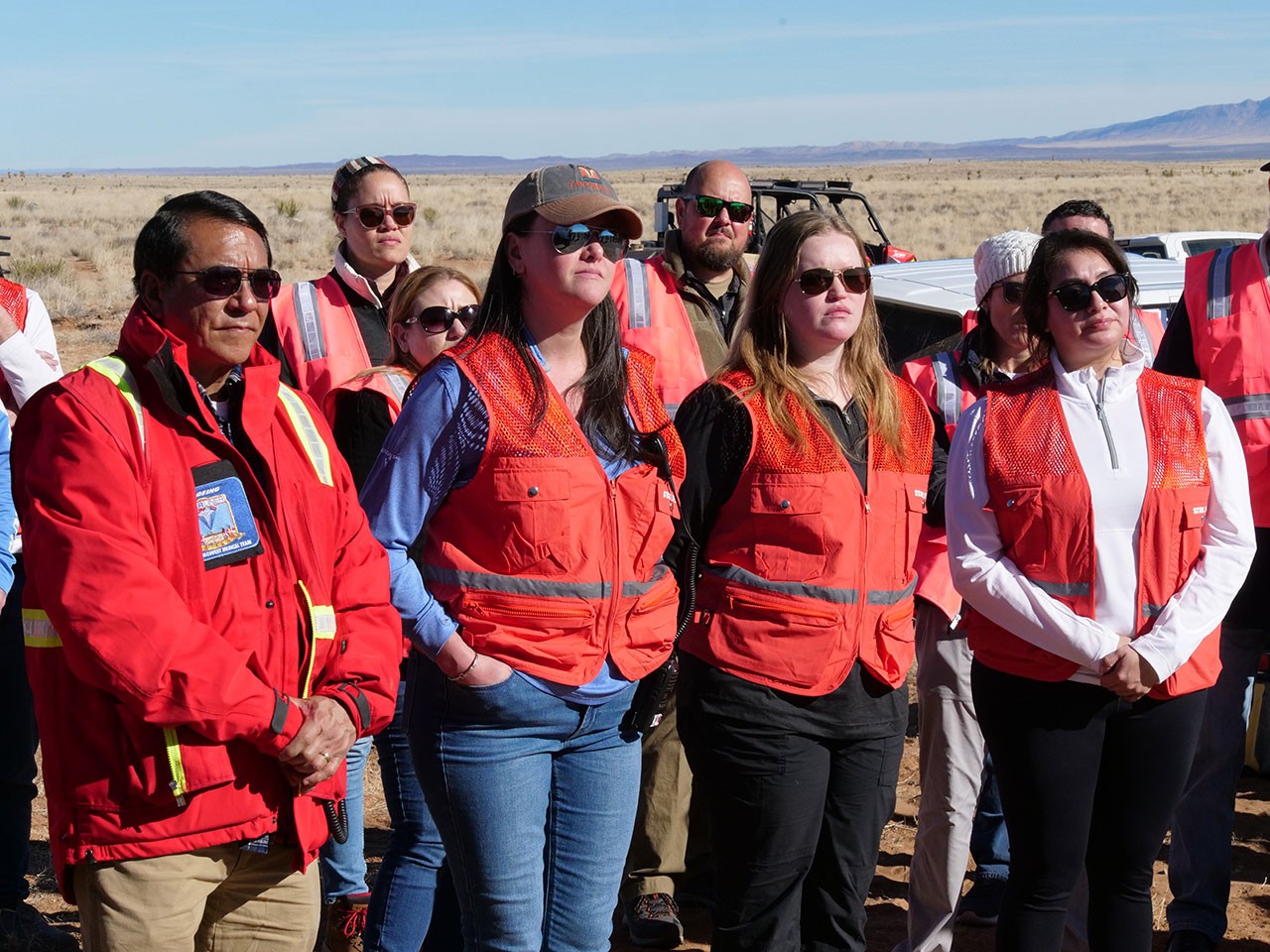 Red Team members including Dr. Joe Lopez (foreground from left), Dee Dobson, Morgan Luther and Ashley Fregoso. (Boeing/Tom Rule photo)
Red Team members including Dr. Joe Lopez (foreground from left), Dee Dobson, Morgan Luther and Ashley Fregoso. (Boeing/Tom Rule photo)
6) Red Team — retrieves astronauts and cargo
The largest of the subteams, the Red Team provides medical monitoring, care and transport for the astronauts and anyone in the field who requires assistance. Doctors and health care workers from Boeing, NASA and the local medical community, as well as firefighters, operate as a single team, flexing responsibilities as needed.
“These professionals are top-notch,” said Michael Schertz, Red Team lead. “The capabilities they provide in the field are the next best thing to an ER.”
The Red Team opens the spacecraft hatch, extracts the astronauts and carries them on stretchers to a medical truck. There NASA doctors check on them, before the astronauts are airlifted out of the area.
The Red Team also hands off time-sensitive cargo, transported back from the International Space Station, to NASA for immediate care and processing.
While the Red Team supported previous Starliner test flights, this will be the first time the team extracts people from the capsule.
“We’ve trained with these astronauts the past few years and know them well,” Schertz said. “We are honored to take care of them and can’t wait to do our part of the mission.”
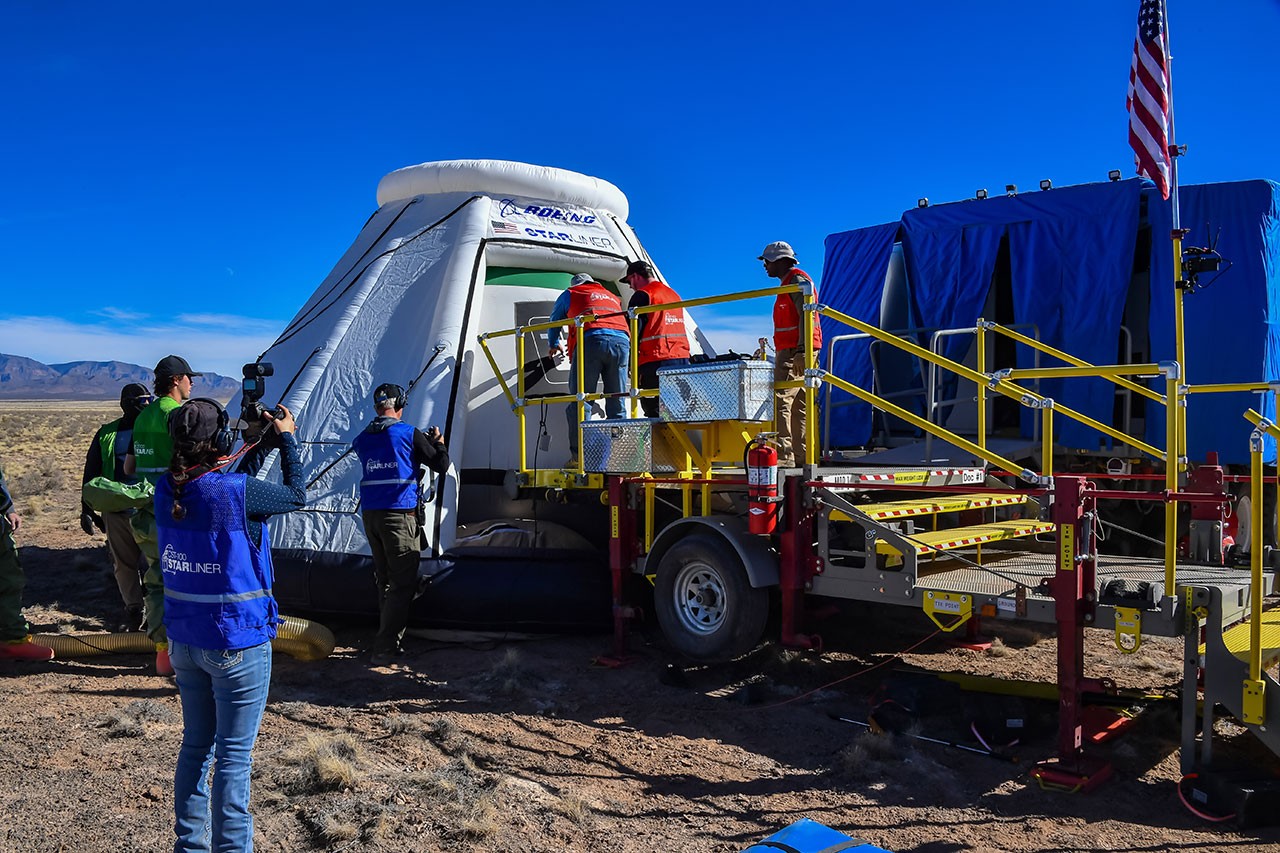 Teams work together during a Mission Dress Rehearsal. (White Sands Missile Range photo)
Teams work together during a Mission Dress Rehearsal. (White Sands Missile Range photo)
7) Blue Team — captures the event through live broadcasting and imagery
Members of NASA Public Affairs and Boeing Communications will join forces to produce a live broadcast of the Starliner’s landing and recovery. In addition to moderating the broadcast and conducting live interviews, this team will capture imagery from the ground and air.
Their footage gives the public an opportunity to witness the conclusion of the Starliner’s first flight with astronauts on board. The imagery also provides situational awareness to mission teams and helps them with overall operational effectiveness.
8) Orange Team — transports the spacecraft back to Florida
While the Starliner’s crew module awaits transport back to Kennedy Space Center, at least one member of the Landing and Recovery team stays with it at all times to keep temperatures optimal and ensure the reusable capsule stays protected.
The Orange Team, which includes some members of the Red Team, prepares the crew module, as well as parts that intentionally were jettisoned during descent, and loads them onto a truck. The spacecraft components go to Florida, where after refurbishment the spacecraft will be ready for its next mission in space.
Watch the Landing and Recovery Team in action when the Crew Flight Test concludes by going to NASA TV Live.
By Elaine Brabant
For more Starliner highlights, follow @BoeingSpace on X, starlinerupdates.com and the CFT mission website.
